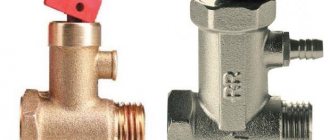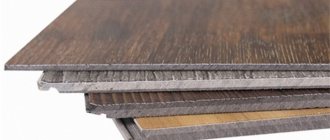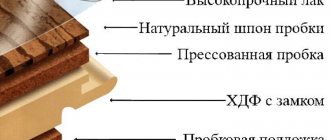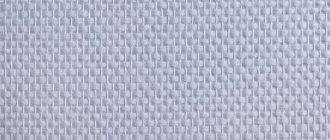Thanks to technology, achieving the task is not difficult.
For example, polymer wells, which have become an alternative to conventional reinforced concrete products.
Let's find out if they are as good as they say.
What it is
Polymer sand rings and wells are made from composite materials: plastic and sand. When ready assembled, the product is highly durable. They are made in separate parts, which is why they are also known as prefabricated ones.
The polymer sand well consists of:
- rings;
- bottom;
- hatch;
- cone-shaped lid.
Rigidity is achieved by incorporating sand into the matrix of the polymer material. Thanks to this, such a product copes with the negative and aggressive effects of the environment. They have proven themselves positively in heaving soil conditions. The connection process is carried out using tongue-and-groove technology.
Consumer Reviews
In their reviews, people who have used polymer sand wells at home confirm the unsuitability of these products for storing clean water. But such wells are excellent for autonomous sewerage equipment in the private sector. Most of the discussion on specialized forums on the Internet is caused by the tightness of the connections of individual structural elements. The fact is that some models do not meet this requirement: grooves and tenons protect the rings from sideways movement, but do not prevent vertical movement. Such wells should never be used in areas with high groundwater levels. In such a situation, it is better to use solid structures: stainless steel, fiberglass, etc. are suitable, but not reinforced concrete.
Polymer sand well at the dacha
In any case, breaking the seal is a dangerous thing. Therefore, buyers are advised to check the assembly and disassembly of the well in the store. Bitumen has proven itself well as a fixing lubricant - it is the leader in popularity among sealants. A procedure to ensure impermeability is mandatory. It should not be neglected, even if the manufacturer or seller assures that the rings themselves are connected tightly and hermetically.
Despite the shortcomings, polymer-sand rings for wells will in the future be able to outperform traditional reinforced concrete structures on the market. While the price of composite material remains high, they are only a good alternative.
Kinds
Polymer sand wells come in different types. They differ mainly in the shaft material used:
- Smooth, one- or two-walled.
- Corrugated, one-, two-wall.
- Combined.
They differ in access: serviced and not. In the latter option, control is exercised only from above. In most cases, all elements are manufactured separately, making it possible to combine them.
The prefabricated manifold has the following technical characteristics:
| Dimensions | There are some standards for diameter, for example, “Ecosys” has an external diameter of 950 mm and an internal diameter of 900 mm. Structure height up to 1500 mm. There are other sizes available for sale. Based on the dimensions of the finished product, the price of the septic tank also differs |
| Ring diameter | Without a bottom, the internal one can have 600, 680, 800 and 900 mm. The outer diameter with and without a bottom is as follows: 650, 730, 850 and 950 mm |
| Cap diameter | Its size is selected individually from 550 to 900 mm. |
| Wall thickness | The cap and ring are 25mm. This is enough for the structure to cope with the load from the outside. As the diameter increases, the wall thickness increases proportionally |
| Ring height | Ranges from 500 to 1500 mm (one). The higher the parameters of the product, the more weight it has |
| Compound | Of the total mass of the product, 75% is sand filler. The remaining 15% is dye and polymer as a binder. Due to this, the product is waterproof. This combination copes well with temperatures down to -70 °C. Can survive up to 500 freeze/thaw cycles |
Peculiarities
The main secret of a polymer sand well lies in the raw materials used for its manufacture. The basis of the well is a composite material consisting of several polymers with the addition of sand.
The production of this material is carried out using resource-saving technologies - casting and pressing occurs using recycled materials. For example, used bottles, packaging and bags made of polyethylene, polypropylene and polystyrene. Sandy loam is used as a reinforcing base - a mixture of sand (80%) and clay (20%) with particle sizes of no more than three millimeters.
The components are mixed in a special device (extruder) and turned into a viscous mixture resembling dough. Various products are pressed from this blank - wells, paving slabs, tiles. Moreover, the strength and type of product directly depends on the proportion between sandy loam and polymers.
The heated mass is fed into the mold and pressed with a heavy press until it hardens completely. Old wells can be recycled. The material can be crushed, melted and pressed again without any problems.
Experts have compiled an impressive list of advantages of this composite material, for example:
- Resistance of the material to temperature changes. Polymer sand products can be used at temperatures from -60 to +120 degrees.
- Pronounced frost resistance - the well will withstand up to five hundred complete frosts with subsequent defrosting.
- Long service life. The material does not change its physical properties for one hundred years, and the color of the product remains unchanged for about thirty years.
- Particular strength. The products do not lose their shape and do not crack under soil pressure or during careless transportation.
- Light weight. For example, a ring made of polymer sand with a diameter of one meter weighs only 60 kilograms. For comparison, the weight of a similar concrete ring is 700 kilograms.
- High waterproofing properties - the products do not absorb moisture and do not allow liquids to pass through. For this reason, wells are ideal for water and sewer lines.
The price of the product is determined by the type of well and its dimensions. For example, a septic tank for two cubic meters costs 20,000-25,000 rubles. A set of eight rings for a well will cost 9,500 rubles. A prefabricated septic tank of two containers of five cubic meters, designed for a family of three people, costs from 58,000 rubles.
Advantages and disadvantages
Polymer-sand prefabricated rings have positive and negative sides:
Pros:
- They are light in weight, which simplifies the transportation process. There is no need to rent lifting equipment. Additional load on the soil is also eliminated.
- Compact sizes. Prefabricated septic tank technology allows installation of the structure even in the basement.
- The ability to assemble it yourself without the involvement of specialists.
- High tightness.
- Operational life more than 15 years.
- The material used is resistant to aggressive chemical environments.
- Range of colors and sizes.
- Resistant to soil influence.
- Ease of processing.
- They do not allow moisture to pass through.
Cons: There are no disadvantages as such. The problem may come down to the wrong choice of components and cover, which cannot cope with the resulting load. Therefore, having made the right choice and performed high-quality installation, polymer sand products will last for decades.
Complete set of a well made of polymer sand rings
A set of type-built wells made of polymer materials (sand composite) consists of the following components:
- set of rings;
- bottom;
- cone;
- Luke.
The main parts of the kit are sand rings for the well, from which the shaft is assembled. The technical parameters of these products are not standardized, so manufacturers adhere to their own specifications.
The most common rings are 1000 mm in diameter. Products with a diameter of 850 mm, 1100 mm and other diameters are also produced.
The strength characteristics of rings for polymer-sand prefabricated wells are determined by their thickness, which usually ranges from 20 mm to 50 mm. The height of the ring is usually 20 cm. The required depth of the shaft is achieved by assembling the required number of components that are connected to each other.
The bottom is a flat round part whose diameter corresponds to the diameter of the shaft. It serves as the base of the well, and must withstand the load from the weight of the structure itself and from the weight of the liquid in the tank. The thickness of the bottom wall is 45-50 mm.
The neck is a transitional element in the shape of a truncated cone, which is necessary to form the upper part of the shaft. Through the neck, access is provided to the well shaft for inspection, maintenance and repair. The dimensions of the cone for a polymer sand well are selected in accordance with the dimensions of the rings.
The neck is closed from above with an inspection hatch, which is also made of composite. The cover can be designed for different maximum loads. Depending on this parameter, hatches are of the following types:
- lightweight – permissible load up to 3 tons;
- medium – permissible load up to 5-6 tons;
- heavy – permissible load up to 12 tons;
- super heavy – permissible load up to 25 tons.
Depending on the type, the scope of application of the hatch is determined. Thus, light and medium hatches are used in areas of country houses or in local areas, in park areas. Heavy and extra-heavy hatches can be used on city streets and highways.
All elements of the well are prefabricated. They are mated to each other using a tongue-and-groove connection. Due to this, a strong, displacement-resistant joint with high tightness is formed.
What is it suitable for?
Thanks to their excellent technical characteristics, sand-polymer prefabricated rings have found a wide range of uses:
- For the construction of a caisson.
- Construction of tanks for technical water.
- Sewage collection facilities.
- When installing a drainage system.
- Lookout.
Let's look at the features of some of them.
Observation
An ideal solution if underground communications are being laid. It is especially effective if there are connection points along the route or a long sewer pipe is laid. An inspection well made of polymer products will allow you to service the water supply or clean the sewerage system.
Rotary
If the highway has a 45-degree turn or branches, then a collector is also constructed from this material. Additionally, he serves as a lookout.
Variable
If along the route it is necessary to combine pipes of different heights into one sewerage or water supply system. It can also be used when it is necessary to bypass underground structures. If the natural landscape has a large slope, then a drop well will reduce the speed of wastewater. The difference can be arranged to a height of 300 to 600 mm.
Material characteristics
A polymer well is created from several rings with a diameter of no more than 110 cm and a height of 220 cm. The set includes a bottom.
The upper ring tapers on the outside; if necessary, a hatch or cover is installed on it. The material is produced using plastic, polymers, sand, and various additives for moisture resistance of products as ingredients.
Using the hot pressing method, the entire composite material is mixed with sand filler. As it cools, it creates a strong bond, creating a durable product.
The manufacturing process takes place in special molds that give the final appearance of the structure. The strength of the material is ensured by pressing technology, which creates a structure with a minimum number of pores.
Areas of application
Polymer wells can be used for various purposes. The structures are used as traditional wells for the extraction of groundwater, as reservoirs for collecting and storing rainwater.
They are widely used as sewer, drainage and inspection structures. Wells can be used for gas pipeline networks.
The tightness of polymer structures allows for reliable protection of communications from adverse external factors.
The strength of the material prevents chemicals and waste from getting inside the tank. The design maintains the required temperature conditions in hot summer weather, as well as in winter frosts.
Depending on the purpose of application, the necessary material is selected. For water supply, preference is given to classic wide shapes. If communications are laid, the structure should be narrower.
In addition to private use, polymer structures are used on roads, in public places - parks, parking lots, and for business.
Advantages and disadvantages
The emergence and widespread use of polymer rings for wells is explained by the special properties that distinguish this material from reinforced concrete structures.
The main advantages are:
- Small dimensions and dimensions of the structure, which allows transportation by a passenger car with a trailer, without using freight transport.
- Light weight (no more than 65 kg) does not require the use of special equipment for installation; the well can be installed independently, even in hard-to-reach places.
- A tongue-and-groove joint that securely fixes the rings. The joints are additionally fixed with silicone. Groundwater is not capable of destroying an integral structure.
- Resistance to external influences of chemical, natural and weather nature.
- Long service life - up to 100 years.
- the cost is lower than that of reinforced concrete options.
The big advantage is that installation can be carried out by several people
The only drawback that can be identified with polymer wells is the need to carefully select a cover. If the structure is located on the road, near a garage or other places with heavy traffic and activity, then it is necessary to select a stable and strong cover that can withstand the weight of the car.
Installation of the structure
To install the well, a location is initially selected. The correct location determination depends on the goals and purpose of the structure. But in most cases, you should avoid being close to your home, as well as particularly polluted places.
The installation process is shown. Only 2 people work
A shaft of the required size is dug. It should be wider than the polymer structure for easy insertion. The width should be determined by the outer diameter of the tank.
For water supply, a well from 5 to 15 m deep is required.
After completion of the excavation work, a concrete bottom is installed. It is in demand when using a well for sewerage, as well as when conducting communications.
It is imperative to secure the structure to avoid its floating. The structure is assembled before immersion.
The use of polymer structures has recently replaced the use of reinforced concrete. The well's tightness, light weight, compact size, and resistance to external influences allow the tanks to be used for a wide range of applications.
The video below talks about the advantages of such wells and shows installation fragments.
Compare reinforced concrete and polymer sand
| Characteristic | Polymer sand | Reinforced concrete |
| Transportation and installation | It has less weight, so transportation is greatly simplified. It is possible to transport with your own car. It is quite possible to do the installation yourself. The weight of the ring can be about 60 kg, so unloading can be handled alone | Weight on average up to 500 kg (one). For delivery it is necessary to hire transport. For installation, the use of lifting equipment is mandatory. Given the nature of the local area, this is not always possible. |
| Easy docking | The tongue-and-groove technology speeds up the assembly process. After connection, an impenetrable seam is formed that does not require additional sealing. It is enough to treat each seam with silicone | It is difficult to achieve a perfect fit and tight fit. After installation, the seam is sealed |
| Resistance to frost and moisture | Polymer sand copes with this perfectly, without damage | Reinforced concrete has large pores through which moisture will flow. Water that penetrates into concrete freezes and because of this gradually destroys it. |
| Resistance to aggressive environments | Polymer sand is neutral to various chemical environments. Ideally proven when used both in a cesspool and with drinking water | Reinforced concrete rings must be subjected to additional processing |
| Easy to process | To make a hole, it is enough to use a household power tool. The resulting cut is not afraid of moisture and contact with aggressive environments | It is difficult to make technological holes for laying a pipeline |
Manufacturing of polymer-sand rings
The raw material for the manufacture of such products is a composite material with the addition of sand filler. A composite is a type of plastic that is endowed with various properties using a variety of additives.
The instructions, according to which well rings are made from this raw material, provide for their creation by pressing under high temperature conditions.
During the manufacturing process, all powdered components are mixed under high pressure. The resulting solution is baked, transforming into low-porosity and high-strength sand-polymer rings for wells.
Polymer ring for a well
Installation and connection
The process does not involve complex technological steps.
It is quite possible to do the work yourself, without involving specialists. CM. below in the video. Thus, the installation of set rings for a well made of polymer sand is carried out in the following sequence:
- At the first stage, a pit is dug to install the structure and lay water supply or other communications. The depth of the trench is below the soil freezing level.
- A sand cushion 200 mm thick is made. The poured sand is carefully compacted, and a layer of concrete up to 300 mm is poured on top.
- After the concrete has hardened, the bottom of the well is installed.
- Before installing the ring, all joints are treated with a special sealant and mastic.
- As you progress, holes are drilled for the outlet/input of water supply or sewerage pipes.
- Each pipe outlet at the cut hole is sealed with a rubber seal and sealant.
- Water supply is connected.
- Finally, a top ring with a hole for a lid or hatch is installed.
- After completion of the work, the empty space is filled with soil and compacted around the entire perimeter.
Installation work
Polymer floors
The process of installing polymer wells begins with digging a pit for the structure and a trench for the pipeline. When calculating the depth of the pit, you should take into account the need to fill in a layer of sand with a layer of 20 cm and pour concrete with an approximate thickness of 30 cm. The trench for the water supply should be located at a depth below freezing of the soil, so that during the cold season there are no difficulties with supplying water to the house.
The bottom of the polymer well is installed on the prepared concrete base, the joints of which must be coated with bitumen mastic in advance. Next, the rings are installed. Their joints also need to be coated with mastic to improve the sealing properties.
A hole is drilled in the ring located at the level of the pipeline trench, lubricated with bitumen, and sealed with a rubber seal. After connecting the pipes and laying all the rings, install the neck and hatch of the well. At the end, the structure is backfilled and compacted with earth or sand. If the soil on the site is unstable, then for these purposes it is better to use a mixture of sand and cement.
Polymer sand structures can be used not only for the construction of drinking wells, but also for inspection, sewer, and drainage wells. In addition, due to the tightness of the reservoir created by fastening polymer rings, it is often used for telephone communications equipment and electrical networks.
➤
What is the service life
If we compare composite material with reinforced concrete products, the latter has a limitation of 50 years. If reinforced concrete does not completely collapse during this period, it will lose its operational properties. Also, every year you will have to check the tightness of all joints and the entire structure as a whole.
As for polymer rings, they will not lose their positive properties throughout their entire service life. According to forecasts, such structures will last for centuries. However, this will be possible provided that installation technology and proper maintenance are followed.
Exploitation
Manufacturers provide a hundred-year guarantee on products made from polymer sand. Moreover, this applies to all joints of the well, the tightness of which is also guaranteed thanks to a special joining technology (groove-protrusion). The tightness of the container ensures absolute dryness. Therefore, wells are used for laying telephone and electrical cables.
Maintenance necessarily includes periodic pumping out of liquid (if the well is used as a storage tank).
Price
The price tag for polymer products will differ depending on the features and technology of creation, as well as the manufacturer itself. The final cost is affected by diameter, height, wall thickness, etc. Plus, each element of a prefabricated well will have an individual cost. Approximate prices are shown in the table below:
| View | Characteristics | Price thousand rubles |
| Ready well “Yenisei” Height 2 meters | Thickness 50 mm and outer diameter 110 cm | 14,5 |
| Ready well “Yenisei” Height 3 meters | Thickness 50 mm and diameter 110 cm | 21.3 |
| Polymer ring | Height 20 cm and diameter 100 cm | 1700 |
| Ring with cap | Diameter 80, height 30, neck diameter 75 cm | 29 |
Important! There may be a different manufacturer in your area, and therefore the price will be different. Therefore, it is better to compare several manufacturers before purchasing.
Prices
The price for a complete set of wells consists of the cost of segments to achieve a given depth, a hatch and a ring. The overall cost is significantly influenced by the version of the ground part. Therefore, to present the overall picture, let’s consider the prices for segments of the underground part of the well:
| City | Company | Price, rub/piece |
| Stupino | Titanium | 1550 |
| Ulyanovsk | Incom | 880 |
| Cheboksary | Gaztrubkomplekt | 780 |
| Naberezhnye Chelny | Niguez | 1200 |
| Moscow | IP Nikishkin | 940 |
As can be seen from the table, prices in different cities of our country differ. Another factor influencing the cost of the product is the use of recycled plastic, which helps to significantly save on raw materials.
Area of use
Plastic wells have many advantages. The most important thing is that they are hermetically sealed, do not enter into a chemical reaction with the environment, and slowly change their properties. Light weight adds an advantage (it can also be a disadvantage). But installing plastic rings for a well is not always easy and they cost a lot.
Shape and size are selected depending on the purpose
Polymer wells can be used for various needs - from storing drinking water to organizing drainage and sewerage. Special plastic is used and its characteristics are selected for the area of application. So, here's where you can use plastic well rings:
- Storm drainage.
- Drainage system: inspection;
- differential;
- prefabricated
Sewerage (storage and filtration wells). Plumbing systems. For the construction of cable ducts. Plastic cable wells allow you to gain access to power and communication cables laid in the ground.
Polymer sand well ring h-200mm d-1000mm
The principle of assembling a sealed plastic well. In addition to the rings, the kit includes a bottom, cone and hatch
What are the advantages of using plastic for wells? First, moisture in any form does not get inside the solid body. This is true for drinking water
For wastewater collection, this is also important, as is the fact that the contents will not leak into the surrounding soil in any form. If we talk about stormwater and drainage, the important thing here is that the walls of the container are smooth and easy to clean
And one more thing - plastic does not react with either the contents or the environment.
To organize sewerage on the site, it is more convenient to use a prefabricated plastic sewer well
Another area where plastic well rings can be useful is restoration. The task is difficult and dangerous. Working in a dilapidated well, when the logs are almost rotten or the concrete rings have moved, is the height of recklessness. It is much safer and easier to restore it using an insert of food grade plastic rings. The disadvantage of this solution is the high price and reduction in useful volume. After all, the insert should be of a smaller diameter, plus they are made with stiffeners.
Deepening an existing well
Water flow is constantly changing, and not always for the better. If there is not enough water in the well, they try to deepen it. This is easier to do with plastic rings.
You can get rid of leaks in the drinking well by installing a plastic tab
Made of concrete, log
Plastic rings can even be used to deepen a well made of concrete rings. We remove the soil only in the center so that the concrete walls do not move down. They remain at the same depth. We deepen only the middle. The size of the “middle” should be larger than the outer dimensions of the repair rings. The disadvantage of this method is that the rings need a smaller diameter. That is, again, the water reserves will be smaller, but there is no need to dig a new well.
We raise the soil to the surface until there is sufficient water flow. Next, we clean the bottom, lay a layer of geotextile, and place its edges on the walls. We pour crushed stone, level it, and place the rings of the required height assembled on the surface on this pillow. Next, we install a bottom filter at the bottom, as in a regular well.
Here's an idea
Since plastic is lighter than water, the installed repair plastic rings must be weighted. For this purpose, any load is suitable, contact with which is not dangerous for water. Ideally, stainless steel chocks and large gravel boulders. This load can be removed in 6-9 months - during this time the soil will “squeeze” the rings and they will no longer rise under any conditions.
This method of deepening a well is safer, but it is not ideal. The result is that the water will be in the plastic insert. It's a little narrower, but it's better than nothing. Everything goes much easier than when trying to add concrete rings. They must be placed on top, and if the existing ones settle, it is unclear how the entire column will behave.
How to make a plastic well deeper
If your well is made of plastic, it is usually of small diameter and working inside is difficult and inconvenient. If you need to make it deeper, the plastic sleeve is taken out of the hole. Next, you will have to clean out the crushed stone that has fallen to the bottom, which filled the gap between the walls of the pit and the sleeve. Then they remove the bottom filter and begin to remove the soil to the required depth. In the future, the actions “inside” are no different: we remove the soil until the amount of incoming water becomes sufficient.
Polymer sand rings are used for sewerage and rainwater collection
On the surface, the required number of plastic rings are added to the finished body and the whole thing is installed in the shaft on a bed of crushed stone. The next steps are already known: we make a bottom filter, pour gravel between the walls. In general, not too difficult, apart from the ground work.
The disadvantage of this method is that if the soil is loose, this trick will not work. By removing the plastic sleeve from the well, you will deprive the wall of support. This can lead to complete or partial shedding. In this case, it may be more justified to install a well.
Why does blockage occur?
In most cases, we ourselves are to blame:
- When using the kitchen sink, we drain food residues, trimmings and dirt into it. In addition, during the dishwashing process, a lot of grease from the residue on the plates ends up in the drain. Gradually, fatty and limescale deposits are deposited inside. And the larger it is, the narrower the gap in the pipes, and as a result, a plug forms in it.
- In the bathroom, the problem is often caused by hair and animal fur that ends up in the drain after bathing.
- In the toilet, trouble can happen due to the ingress of certain hygiene products, cotton wool, paper, floor rags and other unwanted things that clog the pipe.
- In some cases, the cause of the trouble is improper installation of pipes (this happens especially often with modern plastic pipes) and violations during their installation - kinks, slopes. However, this shortcoming is revealed quite quickly after the start of operation, and it will not be possible to eliminate it on your own.
- In older houses, the cause of the blockage may be cast iron sewer pipes. Over time, corrosion appears on their inner walls, they become uneven with a strong coating of rust. In such places, and this is most often the section of pipe from the sink to the bathtub outlet, blockage is common.
- Lack of proper care and preventive cleaning of pipes.
If you notice that an unpleasant odor has appeared from the sink in the kitchen or in the bathtub, the rate of water flow through the drain has decreased, or the rise of water in the toilet bowl is often noticeable after flushing - it’s time to take action before the problem goes too far and you completely lose the ability to use them.











